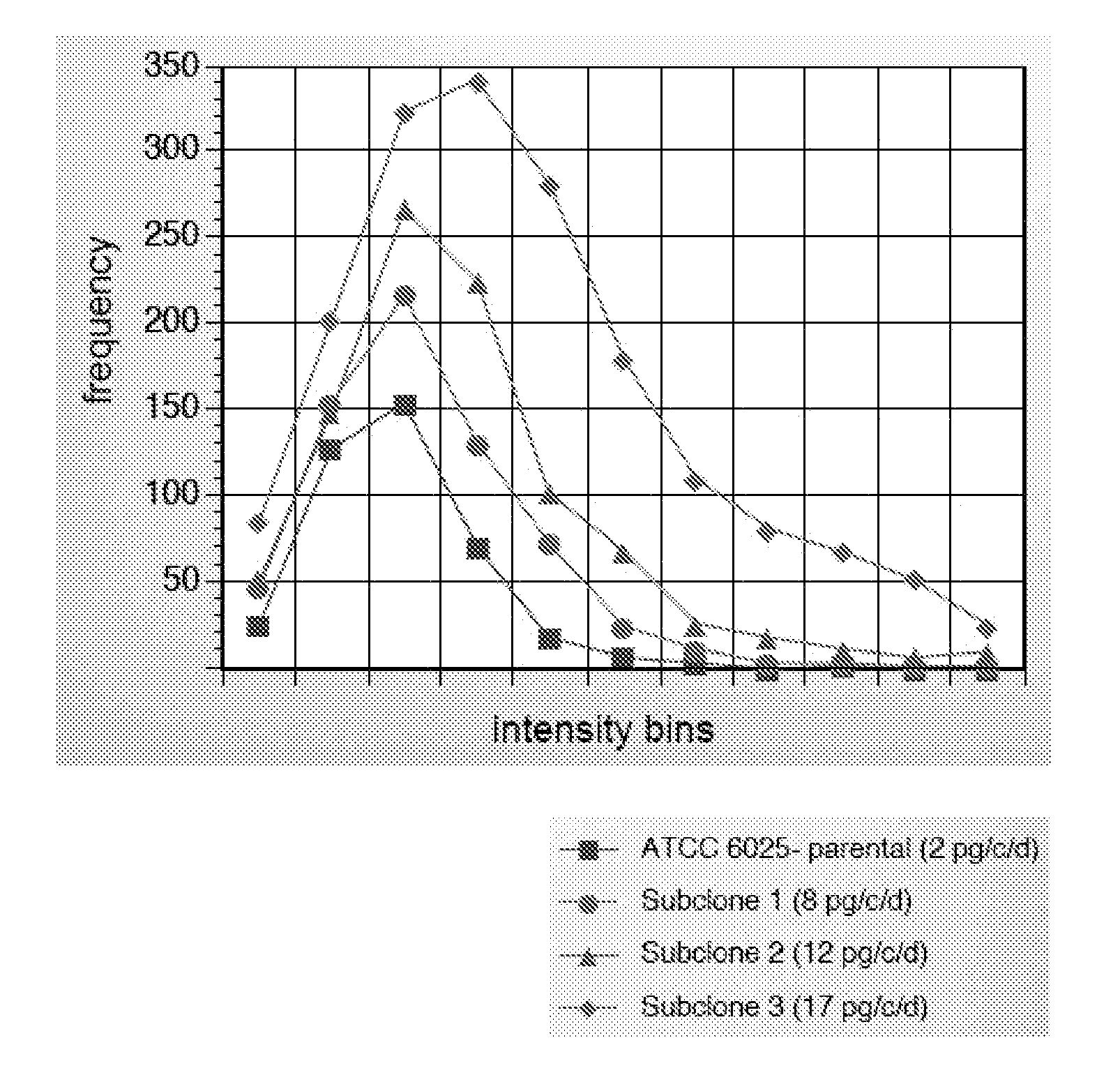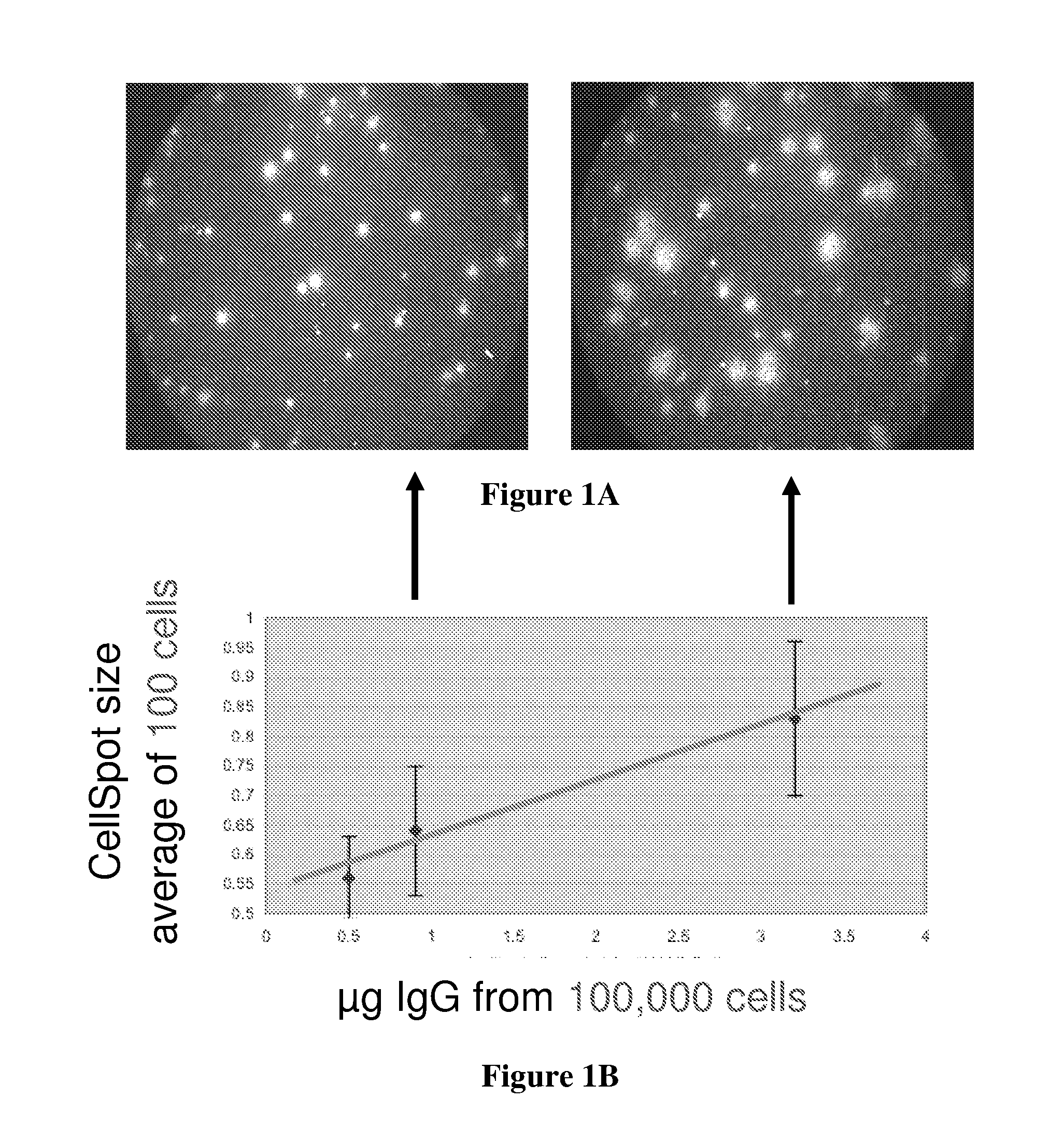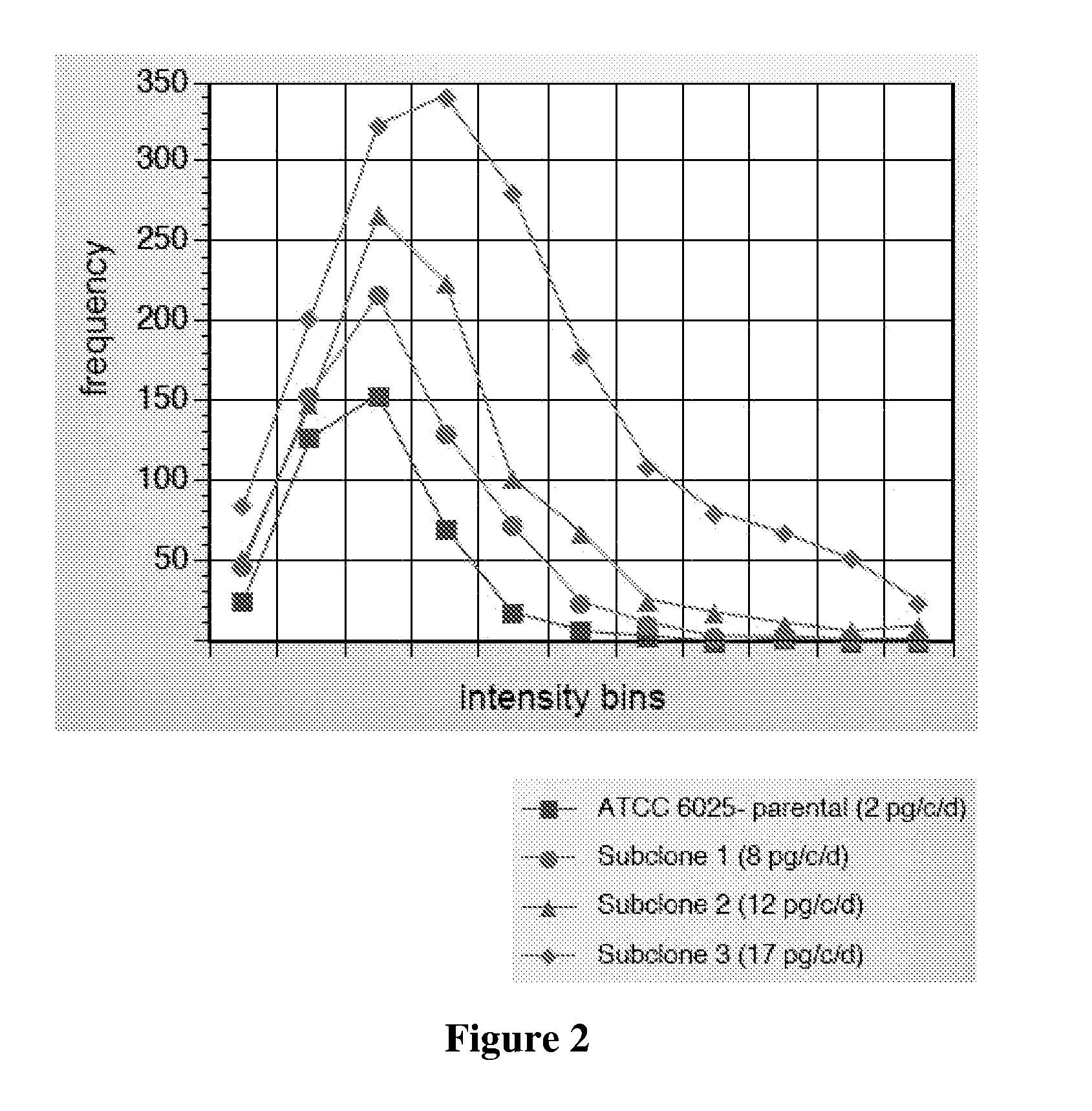Cellspot applications
a cell-spot and cell-spot technology, applied in the field of single cell or multiplexed cell-spot detection, can solve the problems of high noise level, inability to distinguish between viable infectious virus and damaged or defective virions, and inability to achieve low noise level, etc., to achieve the effect of improving efficiency and improving immunogenicity
- Summary
- Abstract
- Description
- Claims
- Application Information
AI Technical Summary
Benefits of technology
Problems solved by technology
Method used
Image
Examples
example 1
Determination of Secretion Level
[0094] Hybridoma cells that secrete immunoglobulins were obtained from ATCC and deposited onto a membrane with 0.4 μm pores in contact with an underlying polystyrene surface coated with anti-immunoglobulin. The cells were suspended in 1.2% methylcellulose and to secure the cells, the plate was centrifuged briefly. The secreted IgG passes through the membrane onto the coated polystyrene surface. The membrane containing the cells was supported on a plastic holder that permits it to be removed from the capture surface; the holder was a modified Transwell® material obtained from Costar®, for which a special holder was designed that brings the membrane into contact with the capture surface.
[0095] After incubation for 2 hours, the membrane was removed and the underlying polystyrene surface incubated with detection particles, washed, and then scanned with both a low and high magnification microscope. The results are shown in FIG. 1A which shows the contras...
example 2
Selection of High Secretion Clones
[0097] The cell line ATCC 60525 was separated into 10,000 individual cell assays using the method of Example 1. Three individual cells were picked and cultured as subclones. The subclones were again subjected to the CellSpot™ assay of Example 1 wherein 1,000 cells were assayed for each subclone.
[0098] As shown in FIG. 2, the distribution of secretion levels is shifted to higher secretion levels for the members of the three selected subclone parents resulting in an overall improvement of nine-fold for the highest secretor, as measured by macroscopic supernatant assay.
[0099] The same methodology is applicable to any population of cells that vary in their secretion level, for example a library of transformed CHO cells. Depending on where the DNA for the secreted protein integrates in the genome, expression level will vary. For more reliable identification of high secretors, the cells are allowed to divide in “bins” of 100 parental cells per well of ...
example 3
Determination of Affinity
[0101] Three hybridoma cell lines were determined to secrete antibodies of varying affinity for the same antigen by the Biacore™ commercial instrument method. Each cell line was assayed as set forth in Example 1 using varying concentrations of capture antibody on the capture surface. The clones differed in the frequency of input cells yielding detectable antibodies according to their predetermined affinity as shown in FIG. 3A.
[0102] The assay was conducted by placing a fixed concentration of capture antibody on the surface and counting the number of spots observed at high surface antibody concentration, and assigning a value of 1.00 to that number of spots (100%), as shown on the Y axis of the graph in FIG. 3A. The capture antibody on the surface was then progressively diluted in replicate wells, and the number of spots observed at each dilution. The ratio of this number to that observed at the concentration assigned the value of 1.00 was then plotted on t...
PUM
| Property | Measurement | Unit |
|---|---|---|
| Fraction | aaaaa | aaaaa |
| Concentration | aaaaa | aaaaa |
| Ratio | aaaaa | aaaaa |
Abstract
Description
Claims
Application Information
 Login to View More
Login to View More - R&D
- Intellectual Property
- Life Sciences
- Materials
- Tech Scout
- Unparalleled Data Quality
- Higher Quality Content
- 60% Fewer Hallucinations
Browse by: Latest US Patents, China's latest patents, Technical Efficacy Thesaurus, Application Domain, Technology Topic, Popular Technical Reports.
© 2025 PatSnap. All rights reserved.Legal|Privacy policy|Modern Slavery Act Transparency Statement|Sitemap|About US| Contact US: help@patsnap.com



